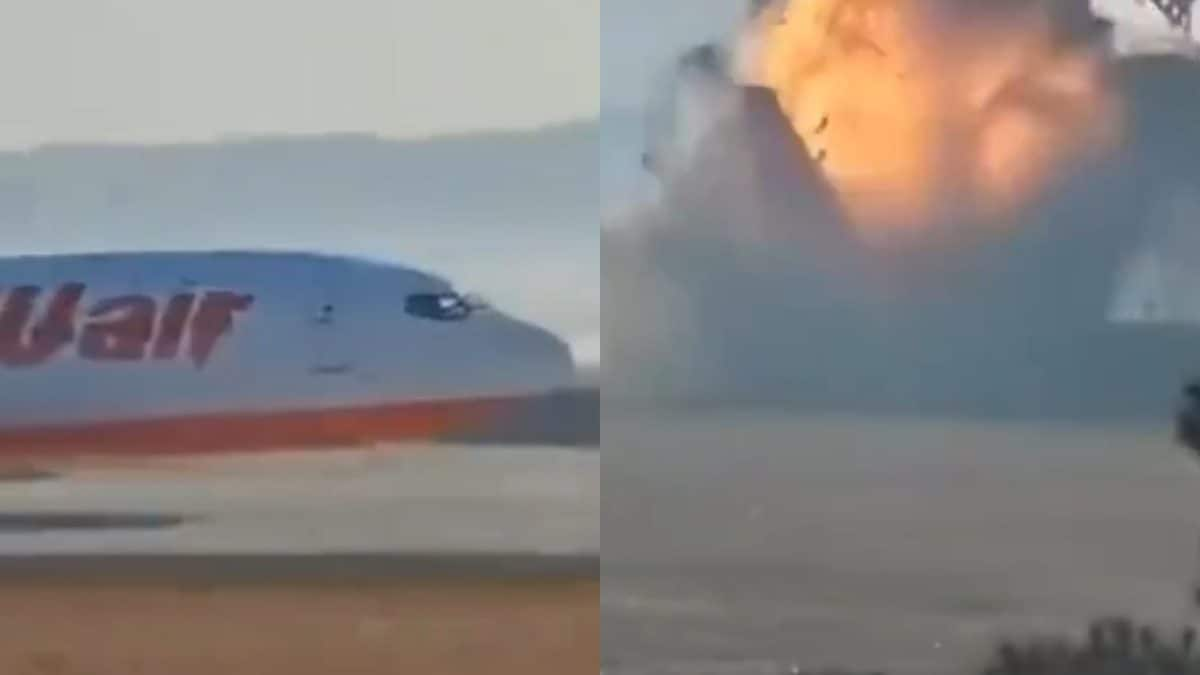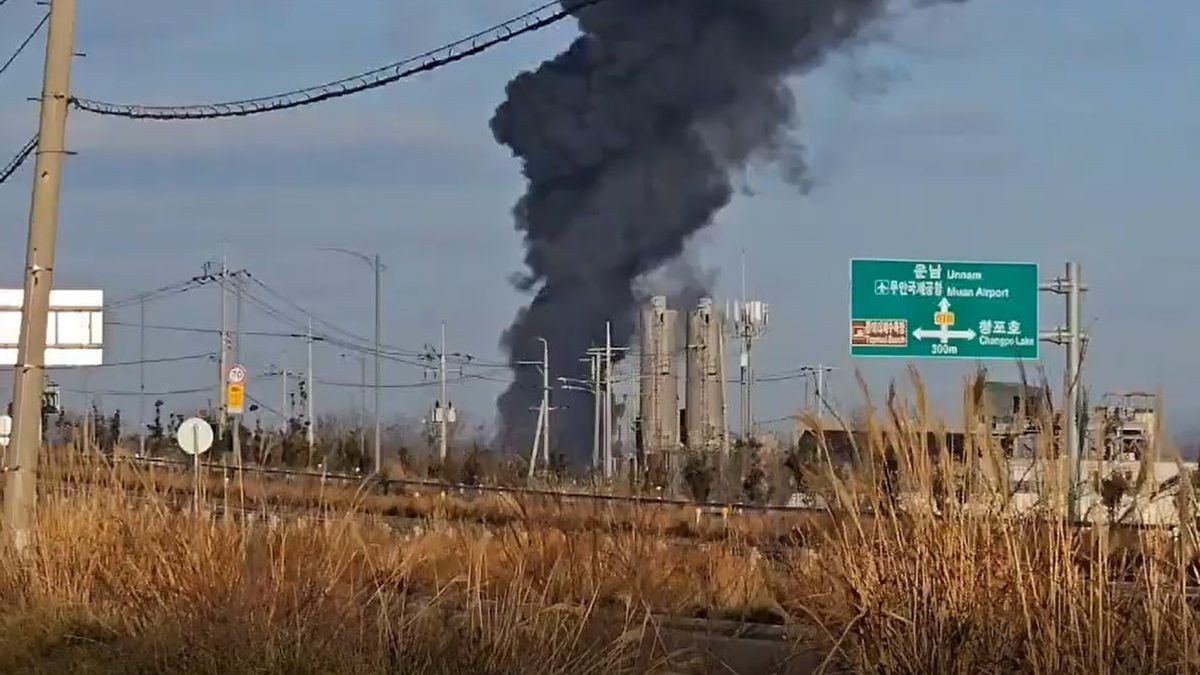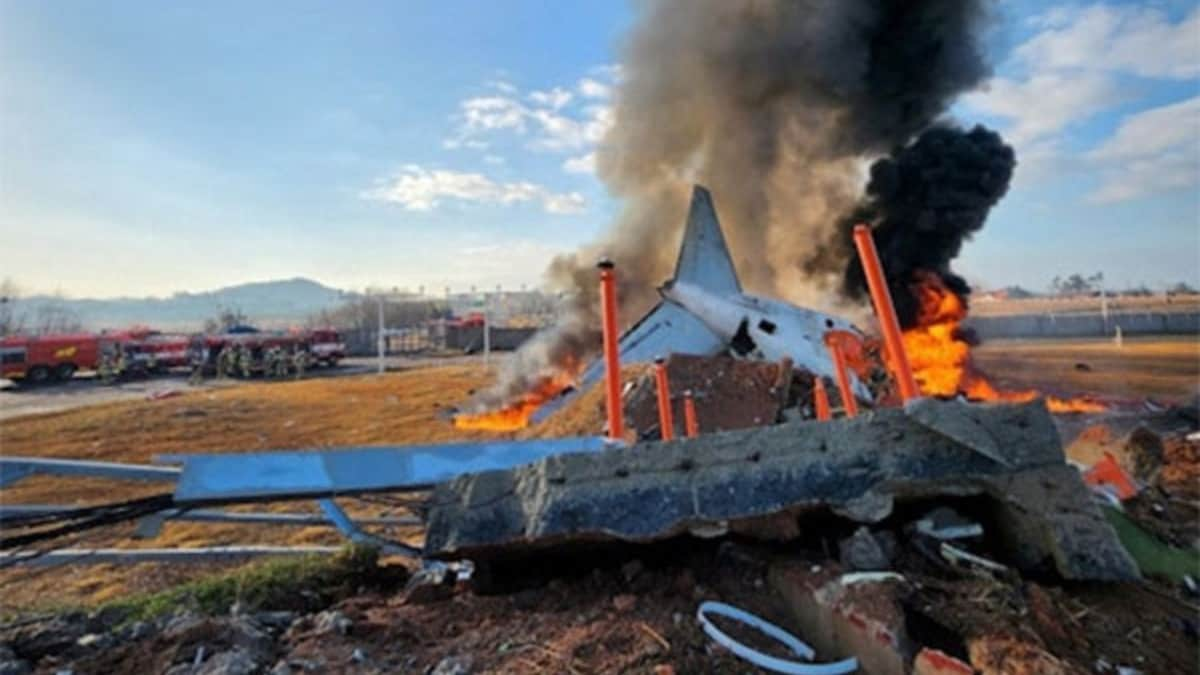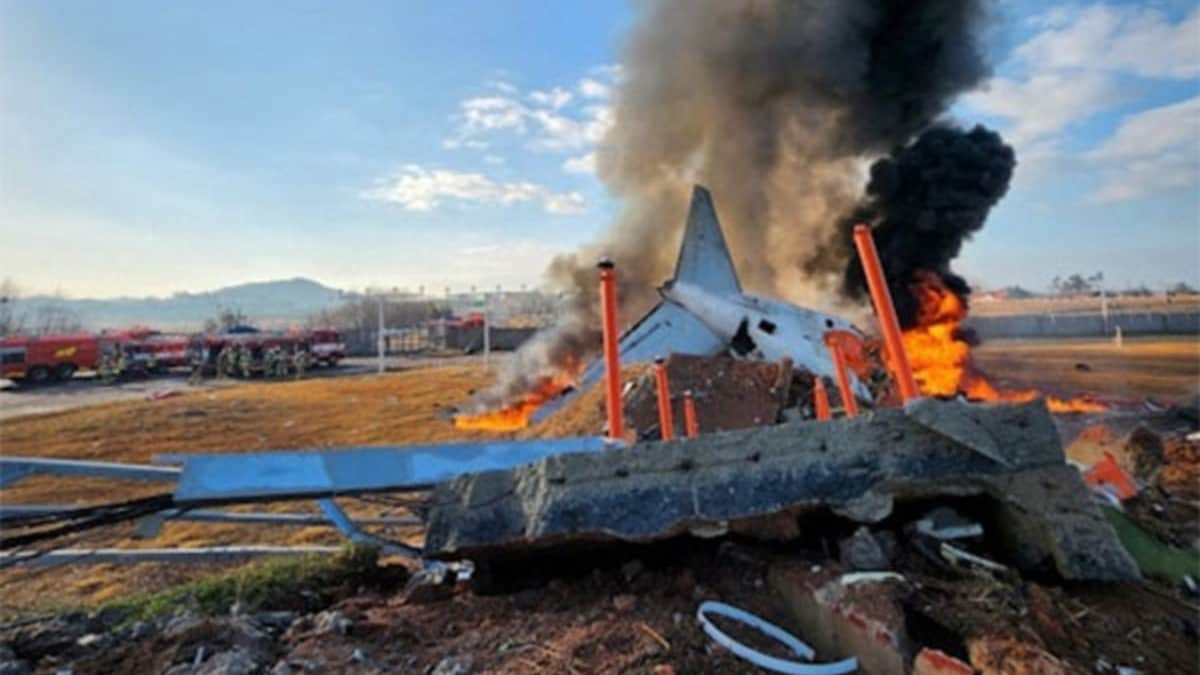Plane crashes South Korea: This exploration delves into the history, causes, and impact of air disasters in South Korea. We’ll examine significant crashes, analyze contributing factors like pilot error and mechanical failures, and explore the nation’s aviation safety regulations and their effectiveness. We’ll also compare South Korea’s aviation safety record to global standards and discuss future implications for safety improvements.
From tragic events that shaped national consciousness to the ongoing efforts to enhance aviation safety, this overview provides a detailed look at the complex interplay of technological advancements, regulatory frameworks, and human factors that influence air travel safety in South Korea.
Plane crashes in South Korea, sadly, are a serious concern. Investigating these incidents often requires detailed analysis of the surrounding area, and that’s where technology like drones can be incredibly useful. Drones provide a safe and efficient way to survey crash sites, capturing high-resolution imagery crucial for understanding the events leading to the tragedy. This improved data collection helps prevent future plane crashes in South Korea.
A History of Plane Crashes in South Korea: Plane Crashes South Korea
South Korea, a nation with a rapidly growing aviation industry, has unfortunately experienced its share of air tragedies throughout history. Understanding these events, their causes, and the subsequent improvements in safety protocols is crucial for ensuring future air travel safety. This analysis delves into the historical context, common causes, safety regulations, and the overall impact of plane crashes on South Korea.
Significant Plane Crashes in South Korea, Plane crashes south korea
Several significant plane crashes have shaped South Korea’s aviation safety landscape. Analyzing these incidents chronologically helps illustrate the evolution of safety measures and the ongoing efforts to prevent future tragedies.
| Date | Location | Aircraft Type | Casualties |
|---|---|---|---|
| October 26, 1979 | Gimpo International Airport, Seoul | Korean Air Lines Flight 007 | All 246 passengers and crew aboard (Soviet interception) |
| December 28, 1997 | Near Cheju Island | Korean Air Flight 801 | 228 |
| June 29, 2011 | Near Jeju Island | Asiana Airlines Flight 991 | 3 |
| July 6, 2013 | San Francisco International Airport | Asiana Airlines Flight 214 | 3 |
Causes of Plane Crashes in South Korea
The causes of plane crashes are multifaceted and often involve a complex interplay of factors. While pilot error, mechanical failure, and adverse weather conditions are common contributors, the specific circumstances vary widely.
Domestic flights may experience different challenges compared to international flights. For instance, domestic flights might face more issues related to regional weather patterns or less stringent maintenance protocols (though this is not always the case). International flights, with their longer distances and more complex flight paths, may encounter different types of mechanical failures or navigational errors.
For example, the crash of Korean Air Flight 801 was attributed to pilot error in navigation during poor weather conditions, highlighting the critical interplay between human factors and environmental challenges. Other crashes, such as Asiana Flight 214, involved a complex mix of factors including pilot training, mechanical issues, and communication breakdowns.
Plane crashes in South Korea, sadly, are a serious issue demanding thorough investigation. The complexities involved often mirror those in other unexplained events, like the recent mystery drone Paris incident, which highlights how easily technology can be misused. Understanding these incidents, whether it’s a downed aircraft or an unidentified drone, requires careful analysis of available data to prevent future occurrences in South Korea and elsewhere.
Safety Regulations and the South Korean Aviation Industry

South Korea maintains a robust aviation safety regulatory framework. The Ministry of Land, Infrastructure, and Transport plays a pivotal role in overseeing and enforcing safety standards, collaborating closely with international aviation organizations like the ICAO.
In recent years, South Korea has implemented several improvements, including stricter pilot training programs, enhanced maintenance procedures, and increased investment in air traffic control technologies. These measures aim to proactively mitigate risks and improve the overall safety of its aviation system.
Impact of Plane Crashes on South Korea
Plane crashes inflict significant economic and social consequences on South Korea. The tourism industry, a vital sector of the economy, can suffer substantial losses following major accidents, impacting visitor confidence and revenue. The aviation industry itself faces economic repercussions, including operational disruptions, insurance claims, and potential legal battles.
The social and psychological impact on affected communities and families is profound and long-lasting. Grief, trauma, and the loss of loved ones can have a devastating effect on individuals and communities.
Plane crashes in South Korea, sadly, are a topic that requires careful examination. Understanding the history of these events is crucial, and a great place to start your research is by checking out this comprehensive resource on south korean plane crashes: south korean plane crashes. This will give you a solid foundation to then delve deeper into the specific causes and consequences of plane crashes in South Korea and how the country has worked to improve aviation safety.
- Long-term economic impact on tourism and aviation.
- Psychological trauma for victims’ families and communities.
- Increased scrutiny and potential regulatory changes.
- Changes in public perception of air travel safety.
International Comparisons of Aviation Safety
Comparing South Korea’s aviation safety record to other nations provides valuable context. While South Korea generally maintains a good safety record, variations exist globally. Several factors influence this, including regulatory frameworks, technological advancements, and the overall state of the aviation infrastructure.
A hypothetical bar chart comparing crash rates (per million departures) for South Korea, Japan, the United States, and Indonesia over a ten-year period (2013-2023) could reveal interesting trends. For instance, Japan and the US might show lower crash rates, reflecting their mature aviation systems and stringent regulations. Indonesia, with its rapidly expanding aviation sector, might exhibit a higher rate, highlighting the challenges associated with rapid growth.
(Note: This is a hypothetical example; actual data would need to be collected and verified.)
Technological Advancements and Safety Measures

Technological advancements play a crucial role in enhancing aviation safety in South Korea. Modern navigation systems, sophisticated weather forecasting tools, and advanced aircraft maintenance technologies contribute to accident prevention and mitigation.
For example, the implementation of Automatic Dependent Surveillance-Broadcast (ADS-B) technology improves air traffic management, reducing the risk of mid-air collisions. Furthermore, the use of flight data recorders (FDRs) and cockpit voice recorders (CVRs) aids in accident investigations, enabling the identification of contributing factors and informing future safety improvements.
Future Implications and Recommendations
Maintaining and improving aviation safety in South Korea requires continuous effort. Potential future challenges include increasing air traffic volume, the integration of new technologies, and the need to adapt to evolving weather patterns due to climate change.
Recommendations include continued investment in air traffic management infrastructure, ongoing research into advanced safety technologies, and the strengthening of international cooperation on aviation safety standards. Regular audits of safety protocols and proactive risk assessments are crucial for maintaining the highest levels of safety.
Concluding Remarks

Understanding the history of plane crashes in South Korea is crucial for improving future safety. By analyzing past incidents, implementing stricter regulations, and embracing technological advancements, South Korea continues to strive for a safer aviation future. The ongoing commitment to safety, alongside international collaboration, holds the key to minimizing risks and ensuring the safety of air travel for years to come.
This ongoing process of learning and improvement is vital for maintaining public trust and fostering a robust and safe aviation industry.
FAQ Section
What is the most common cause of plane crashes in South Korea?
While data varies, a combination of factors often contributes, including pilot error, mechanical failure, and weather conditions. No single cause consistently dominates.
How does South Korea’s aviation safety compare to other developed nations?
South Korea generally maintains a good safety record, comparable to many other developed nations, but continuous improvement is always a focus.
What role does technology play in preventing plane crashes?
Advanced technologies like improved navigation systems, flight data recorders, and sophisticated weather forecasting significantly enhance safety by reducing human error and improving situational awareness.
Plane crashes in South Korea, sadly, are a serious issue demanding thorough investigation. Thinking about the precision needed to avoid such disasters, it’s interesting to compare that to the intricate choreography of drone shows; check out this link to learn more about how do drone shows work. The technology behind those stunning aerial displays highlights the complex coordination needed for safe, controlled flight, a stark contrast to the devastating consequences of uncontrolled crashes.
Are there any specific organizations responsible for aviation safety in South Korea?
Yes, several government agencies and regulatory bodies oversee and monitor aviation safety in South Korea, ensuring compliance with international standards and implementing safety protocols.
